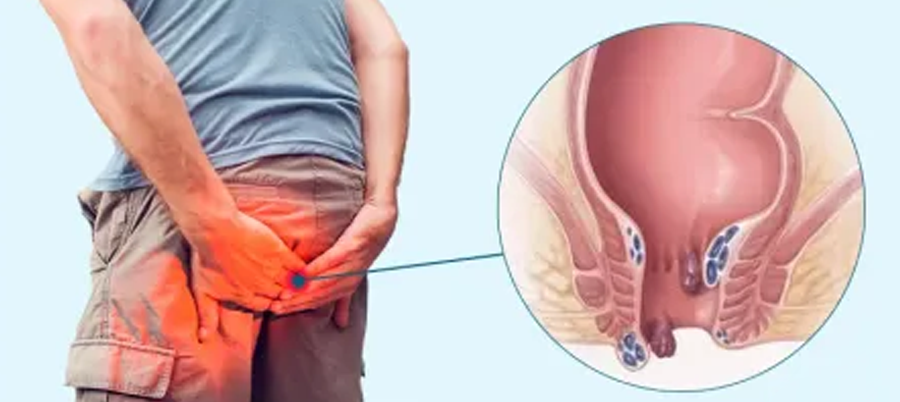Piles, also known as hemorrhoids, are swollen and inflamed veins in the rectum and anus that cause discomfort and bleeding. They are a common condition and can be classified into two types: internal hemorrhoids, which occur inside the rectum, and external hemorrhoids, which develop under the skin around the anus.
Causes and Risk Factors
- Straining During Bowel Movements: Frequent straining can increase pressure in the rectal veins.
- Chronic Constipation or Diarrhea: Both conditions can lead to hemorrhoid formation.
- Sitting for Long Periods: Prolonged sitting, especially on the toilet, can contribute to hemorrhoid development.
- Pregnancy: Increased pressure on the pelvic blood vessels during pregnancy can lead to hemorrhoids.
- Obesity: Excess weight increases pressure on the veins in the lower rectum.
- Low-Fiber Diet: A diet low in fiber can cause constipation and straining.
- Aging: Tissues supporting the veins in the rectum and anus can weaken and stretch with age.
Symptoms
- Bleeding: Bright red blood on toilet paper or in the toilet bowl.
- Itching or Irritation: Around the anus.
- Pain or Discomfort: Especially when sitting.
- Swelling: Around the anus.
- A Lump: Near the anus, which may be sensitive or painful.
Non-Surgical Treatments
Lifestyle and Dietary Changes
- Increase fiber intake through diet or supplements.
- Drink plenty of fluids.
- Avoid straining during bowel movements.
- Exercise regularly to prevent constipation.
Topical Treatments: Over-the-counter creams, ointments, or suppositories to reduce inflammation and pain.
Warm Sitz Baths: Soaking the anal area in warm water several times a day to relieve symptoms.
Pain Relievers: Over-the-counter medications like acetaminophen or ibuprofen.
Minimally Invasive Procedures
- Rubber Band Ligation: A small rubber band is placed around the base of an internal hemorrhoid to cut off its blood supply, causing it to wither and fall off.
- Sclerotherapy: A chemical solution is injected into the hemorrhoid tissue to shrink it.
- Coagulation Therapy: Uses laser, infrared light, or heat to harden and shrink the hemorrhoid.
Surgical Treatments
- Hemorrhoidectomy: Surgical removal of extensive or severe hemorrhoids.
Conventional Hemorrhoidectomy: Removal of hemorrhoids using a scalpel, cautery, or laser.
Stapled Hemorrhoidopexy: The hemorrhoid is stapled back into its normal position inside the rectum, cutting off blood flow and causing it to shrink.
- Hemorrhoidal Artery Ligation: A Doppler probe is used to locate the hemorrhoidal arteries, which are then tied off to reduce blood flow to the hemorrhoids.
